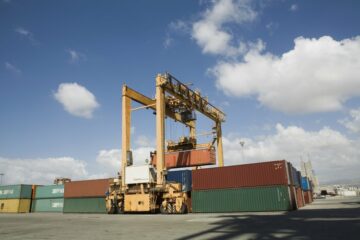
Table of Contents
Last-mile logistics is arguably the most important stage in the entire supply chain. This generally includes receiving an order from a warehouse and delivering it on time to the right customer, store, or a specific pick-up point, without any damages.
However, customer expectations have changed tremendously over the past few years. Customers now want visibility of their orders. They want to know where exactly it is at any time. In many cases, they also want to be able to change delivery locations at the last minute. Customers also want to be able to process returns immediately and receive replacements almost instantaneously.
The dynamic growth of e-commerce has changed the behavior and purchasing habits of customers.
In the past, customers were able to use two types of delivery:
- Postal services and
- Courier services.
In the distance past, The purchasing process itself took much longer then than it does now because each customer would visit stores in person, compare offers and decide where to buy the product. Not to long ago, most people would have scoffed at the idea of buying clothes or shoes online (i.e how do I know how it really fits?).
Today, however, customers have better access to goods thanks to e-commerce. Consumers can pick up their packages at any time at the pick-up points according to the concept of out-of-house delivery. In today’s e-commerce model, in many instances, the customer doe not actually have to choose the shipping model. Instead, they can select the type of shipping they want, based on the price offered. It is also true that sometimes an express courier service isn’t faster than other options, at least not on every route.
The noticeable increase in online orders means that many companies need to improve the logistics of the last stage.
What are the challenges of the logistics of the last stage?
Among the most difficult logistical challenges of the last mile is requiring efficient logistics to manage the very short delivery time of certain goods from port to the door. Another challenge is the organization of the logistics team and the smooth flow of information through modern monitoring systems and data processing. The number of larger orders increases the complexity of the logistical process of the last stage. This requires flexibility from carriers and designs the best routes for drivers.
How can the logistics of the last stage be improved?
The logistical management of the last mile varies depending on the business sector.
- The B2B industry generally consists of two stages:
- The first stage is when raw materials are transported to the production plant and
- The second stage is when finished products are shipped to a shop, warehouse, or another collection point.
- In the B2C segment, the logistics of the last stage face challenges mainly due to the problem of reconciling high transport costs with timely transport arrangements. Generally speaking, owners of online stores should strive to reduce the routes taken by suppliers.
Planning logistics activities is a step towards better organization within the company and increased flexibility that allows for faster deliveries.
It is also important to ensure efficient warehouse activities, as without them it is difficult to maintain the logistics of an efficient final stage.
Another challenge is the fact that modern retail shoppers want to receive their packages as soon as possible while maintaining a certain level of security and at a reasonable delivery price, which is extremely difficult to reconcile. All consumers want to keep track of their delivery, and many modern systems allow customers to monitor the delivery through a link that is convenient for them and provides an overview of the whole process.
Why is timeliness so important in the logistics of the last stage?
Timely transport is particularly important. Any downtime due to the lack of the ordered parts will stop the production process and cause huge financial losses for the company.
This is why efficient and timely delivery should be the primary goal of any logistics company that wants to survive in the current market and maintain a good relationship with customers. When receiving their package, the customer is subconsciously evaluating the quality and duration of the entire logistics process. This has a significant impact on their views on the company and on further purchasing decisions. Raising customer expectations and meeting these needs should be a priority for any company that prides itself on good customer relationships.
When customers learn of embarrassing practices by employees of certain logistics services, they will not want to see their packages being delivered by the same companies!
How to maintain the efficiency of the supply chain during the epidemic?
Maintaining supply chain efficiency increases efficiency and can be a source of inspiring innovation.
Efficient planning and execution in the supply chain are possible on the basis of data, e.g. in road transport, where there are many participants (freight forwarders, hauliers). Undoubtedly, quick access to data is particularly important.
The efficiency of the supply chain is the result of the productivity of people, devices, and systems, among many other factors.
Adapting logistics companies to rapidly changing circumstances and customer expectations is crucial for business growth. The quality and efficient last-mile logistics of companies guarantee competitive advantage and lasting relationships with customers in each sector. It is worth noting that the development of last-mile logistics depends not only on the efficiency of transportation. The entire supply chain can contribute in various ways to improve the last stage of operations. For example, good packaging of the product from the origin can save the final distribution warehouse a lot of trouble prior to despatching the goods to the last customer.
| Do you have questions relating to import/export procedures? We provide free email consultations: Contact Us Today |
- 7
- 9
- access
- activities
- ADvantage
- All
- among
- B2B
- BEST
- business
- buy
- Buying
- cambridge
- cases
- Cause
- challenge
- change
- Companies
- company
- Consumers
- Costs
- Courier Service
- Current
- Customers
- data
- data processing
- Deliveries
- delivering
- delivery
- Development
- Devices
- distance
- DOE
- downtime
- e-commerce
- efficiency
- employees
- execution
- Face
- financial
- First
- Flexibility
- flow
- Free
- freight
- good
- goods
- Growth
- High
- How
- HTTPS
- huge
- idea
- Impact
- Increase
- industry
- information
- Innovation
- IT
- last mile
- LEARN
- Level
- LINK
- logistics
- Logistics Services
- Long
- management
- Market
- materials
- model
- monitoring
- Offers
- online
- Operations
- Options
- order
- orders
- Other
- owners
- packaging
- People
- planning
- price
- Product
- Production
- productivity
- Products
- quality
- Raw
- reduce
- Relationships
- retail
- returns
- Route
- security
- Services
- Shipping
- Shoppers
- Short
- So
- Stage
- store
- stores
- suppliers
- supply
- supply chain
- Systems
- time
- track
- transport
- transportation
- transported
- us
- visibility
- Warehouse
- within
- worth
- years






